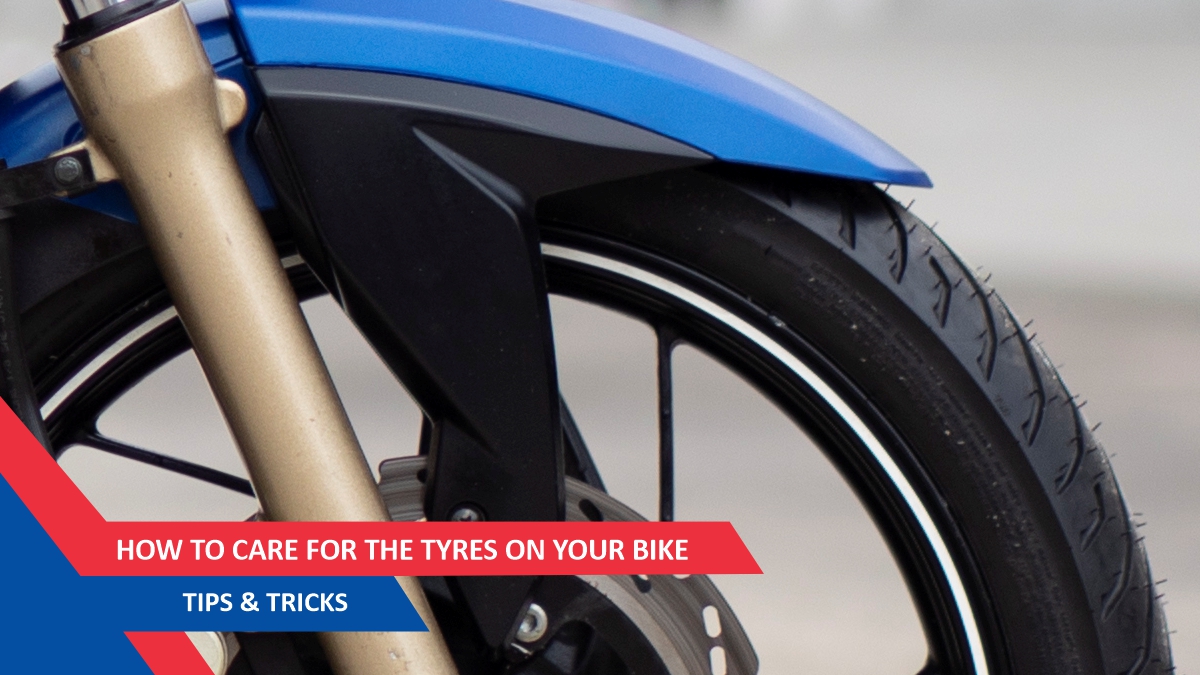Like most other bike components, a manufacturer spends a lot of time and resources to find the right tyre, which is sometimes even tailor-made to match the bike’s performance and dynamics. It is one of the most vital components which helps your bike to ride as it should. If the engine is the heart of the machine, then tyres are the limbs. Precisely why, as a part of your care-and-check routine, it is essential that you ensure they are in good health. Here are some tips:
It is in the air
Once you have purchased the motorcycle, go through the owner’s manual to find the recommended air pressure values for the tyres. Then, you must ensure that these values for the front and rear tyre are maintained at all times. Visiting a road-side tyre shop and depending on their faulty equipment is not the way to go about it. The recommended air pressure value you must maintain is when the tyres are cold. Whenever you decide to fill the air in the middle of a journey, the tyre temperature goes up, making the air inside expand. So on top of the equipment, which is inaccurately calibrated at most shops, the already expanded air won’t allow for ideal pressure maintenance.
The best thing to do would be to invest in a portable air pump and gauge, which is not too expensive to buy these days. If that is not an option, get a pocket-sized digital gauge and check the air pressure before you begin to ride when the tyres are still cold. If the tyres are overinflated, it is easy to release some of the pressure using the same device. If the values are lower than the recommended level, ride as slowly as possible to the nearest filling station and get the tyres inflated. Once done, it will be wise to depend on your pressure gauge to check if the values are set to recommended levels.
Why all this fuss about air pressure? The reason is if the tyres are overinflated, they will make the suspension work harder, affect the handling and ride quality of your bike adversely. It will also reduce the grip of the tyres and could even jeopardise your safety. An overinflated tyre also tends to make the central part of the tyre’s tread wear out faster. On the other hand, an underinflated tyre will make your bike sip more fuel as the engine will have to compensate for increased rolling resistance, which further increases the risk of a sidewall bulge and a puncture many folds. An underinflated tyre also has the tendency to wear out unevenly at the edges.
Keep an eye
Visual inspection is an essential aspect of tyre care. But what are you looking for? Check the sidewall for any bulges. While you are it, check the rim too for any deformities resulting from a heavy impact. Keep an eye on stretch marks, which happens as the rubber ages and becomes harder. Put the bike on its main stand or a paddock stand and check for tiny rocks or any such debris stuck in the tread. Remove these with an appropriate object which isn’t too sharp and damaging to the tyre.
As you roll the tyre while the bike is stationary, check if any nail has pierced through the rubber and also that the tyre is perfectly round and has not developed any flat spot or deformity. If your riding style is aggressive, tyre life does take a hit and you will need to replace them if the wear is premature. Check the tread and replace the tyre if the depth is shallower than ideal.
Pick the right playground
While the aforementioned pointers are a part of primary care for your bike’s tyres, how you ride and where you ride your bike will also affect the tyres’ health. If it is a street-spec bike you ride that has been primarily designed to be ridden on the road, taking such a machine off the road will increase the risk of tyre damage. Likewise, tyres that are primarily designed for off-road use will quickly shed rubber quickly if they are rolling on tarmac most of the time.
Ride with care when you come across sections which are unpaved or filled with potholes. If you ride hard through a broken stretch, one heavy impact is enough to damage the rim and the tyre both. Hard braking, sudden acceleration, and indulging in antics like burnout, stoppies and wheelies will only shorten the life of your bike’s tyre. Also, overloading will result in more stress on the tyre than what it has been designed for. Never exceed the load capacity mentioned in the owner’s manual.
How safe your rides are, depends a lot on the health of your bike’s tyres. So look after them as one of the most critical components of your bike, and they will always keep you safe.



ok